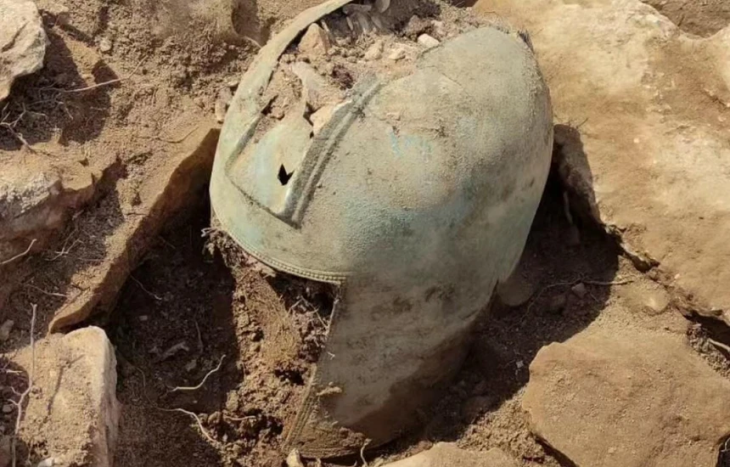Archaeologists in the Gomila area of Croatia’s Pelješac peninsula have made a remarkable discovery—a 2500-year-old Greek-Illyrian helmet. This find comes on the heels of a previous discovery by the same team in 2020, adding another layer of intrigue to the archaeological landscape of the region.
The significance of this new discovery lies not only in the age of the helmet but also in its potential cultural and historical implications. Initial analysis suggests that this newly unearthed helmet predates the one found earlier, possibly dating back to the 6th century BC. The context of its discovery, within a dry stone-walled addition to a grave, hints at its possible role as a votive deposit, contrasting with the warrior elite connotations of the previous helmet found with iron weapons in a grave.
Marta Kalebota, an archaeologist from the Korcula City Museum and a member of the excavation team, shared the excitement surrounding the find, highlighting the rarity and significance of discovering two distinct Greek-Illyrian helmets in the same vicinity. The differences in design and dating between the two helmets offer valuable insights into the evolution of helmet styles and their symbolic significance within ancient communities.
Professor Hrvoje Potrebica from the Department of Archaeology at the Faculty of Philosophy in Zagreb emphasized the continuity of power and status represented by these helmets. Helmets, throughout history, have served as symbols of status and authority, reflecting the social structures and values of their time. The presence of two different helmet types at the same site underscores the complexity and richness of ancient Illyrian society.
The previously discovered helmet, with its open-faced design and decorative features typical of the 4th century BC, provides a glimpse into the military and cultural exchanges between Greece and Illyria during that period. In contrast, the newly found helmet, believed to be from the 6th century BC, adds a layer of chronological depth and rarity to the archaeological record.
This discovery, coupled with the wealth of artifacts unearthed during the ongoing excavations, paints a vivid picture of the funeral practices and material culture of ancient Illyrian communities during the latter half of the first millennium BCE. The meticulous study and analysis of these artifacts promise to enhance our understanding of ancient Illyrian life, craftsmanship, and social dynamics, offering a window into a fascinating chapter of human history on the Pelješac peninsula.
